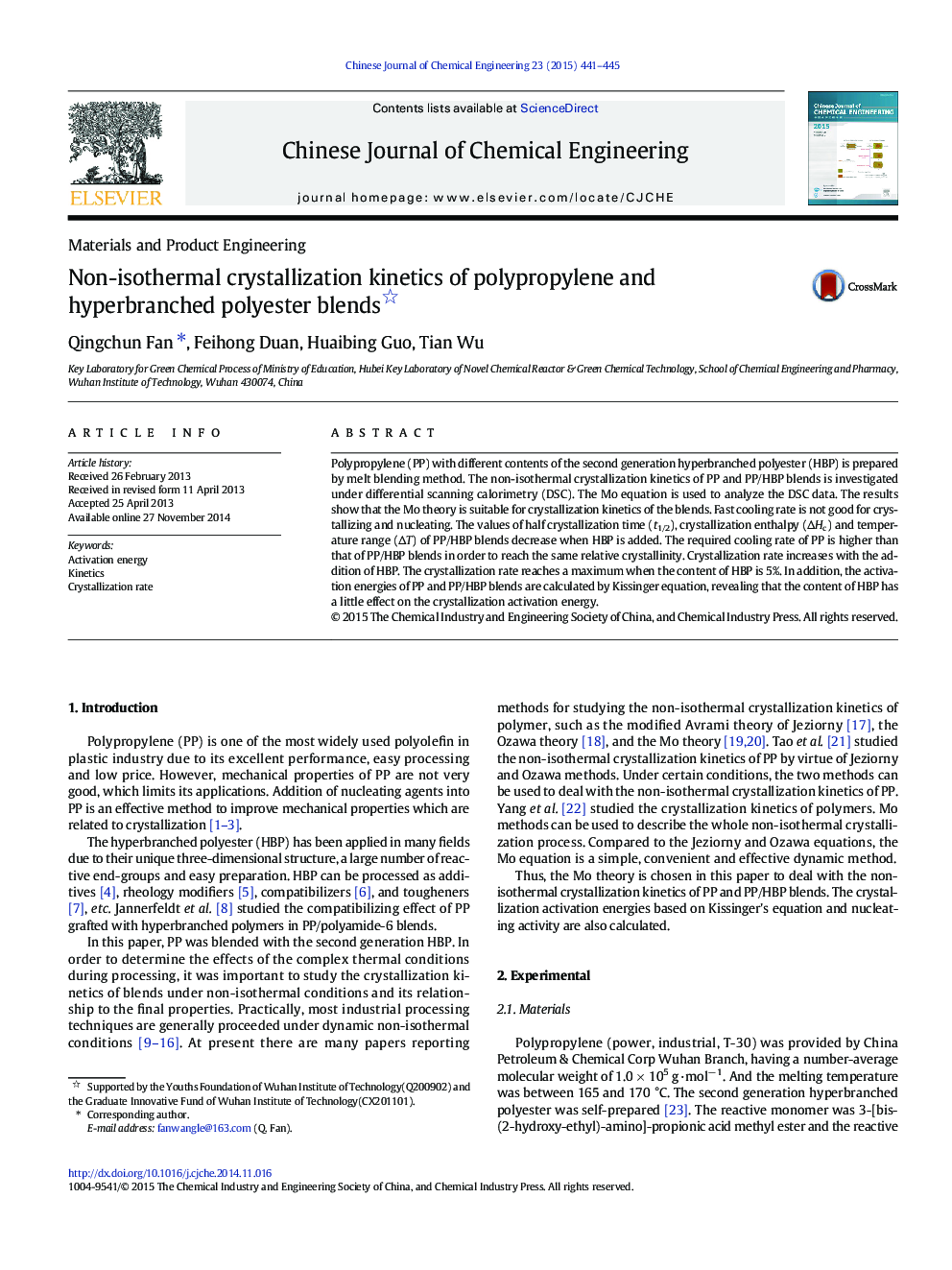| Article ID | Journal | Published Year | Pages | File Type |
|---|---|---|---|---|
| 167164 | Chinese Journal of Chemical Engineering | 2015 | 5 Pages |
Polypropylene (PP) with different contents of the second generation hyperbranched polyester (HBP) is prepared by melt blending method. The non-isothermal crystallization kinetics of PP and PP/HBP blends is investigated under differential scanning calorimetry (DSC). The Mo equation is used to analyze the DSC data. The results show that the Mo theory is suitable for crystallization kinetics of the blends. Fast cooling rate is not good for crystallizing and nucleating. The values of half crystallization time (t1/2), crystallization enthalpy (ΔHc) and temperature range (ΔT) of PP/HBP blends decrease when HBP is added. The required cooling rate of PP is higher than that of PP/HBP blends in order to reach the same relative crystallinity. Crystallization rate increases with the addition of HBP. The crystallization rate reaches a maximum when the content of HBP is 5%. In addition, the activation energies of PP and PP/HBP blends are calculated by Kissinger equation, revealing that the content of HBP has a little effect on the crystallization activation energy.
Graphical abstractThe fast cooling rate is not conducive to the crystallization of the polymer and the values of half crystallization time (t1/2) of PP/HBP blends decrease when HBP is added. This implies that the crystallization rate increases with the addition of HBP. The HBP acts as a nucleating agent during the crystallization of the blends. When the content of HBP is 5%, the crystallization rate reaches the maximum.Figure optionsDownload full-size imageDownload as PowerPoint slide
